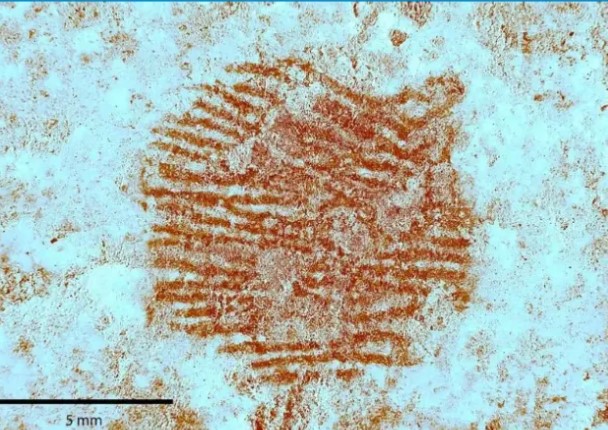Spanish researchers have made a sensational discovery that fundamentally redraws our image of Neanderthal symbolic thinking. At the Abrigo de San Lázaro site in Segovia, a granite boulder with a red, ocher-colored dot was recovered, bearing a human fingerprint. The incredible part: forensic analyses have unequivocally identified this fingerprint as belonging to a Neanderthal. This approximately 43,000-year-old object is the oldest and most complete evidence of a human fingerprint of this species in Europe and represents direct proof of the intentional use of pigments for symbolic purposes.
A Deeper Look into the Neanderthal Psyche
The multidisciplinary research involving the Complutense University of Madrid (UCM), the Geological and Mining Institute of Spain (IGME-CSIC), the General Commissariat of Scientific Police, and the University of Salamanca has shown that this is no accident. David Álvarez Alonso, a researcher at UCM, emphasizes: “The archaeological, stratigraphic, and morphological evidence points to a conscious manipulation of the object: its selection, transport, pigmentation, and possibly its interpretation as a human facial representation through the phenomenon of pareidolia, which would also have been present in Neanderthals.”
This is not only the first complete fingerprint associated with a pigment in a European Paleolithic context but also the first time such an unequivocally individualized symbolic gesture has been recorded in the archaeological record of Neanderthals.
High-Tech Research Unravels the Past
Since 2019, researchers, including María de Andrés Herrero (UCM) and Andrés Díez Herrero (IGME-CSIC), have been working on this fascinating project. State-of-the-art techniques such as 3D scanning, SEM, XRF, multispectral analysis, and a dermatoglyphic study conducted by the scientific police were used. This combination of archaeology, geology, forensics, and statistics enabled the precise analysis of the artifact.
This finding not only strengthens the hypothesis of Neanderthal symbolic thought and abstract capacity but also opens up a completely new line of research by applying modern forensic methods to the study of prehistoric symbolic behavior. The project was financed by the Junta de Castilla y León and the Complutense University of Madrid.




